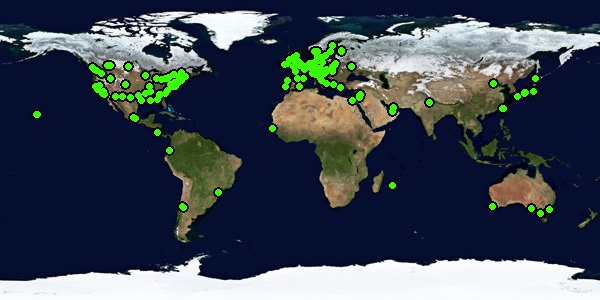Introduction
Photography was done in the days leading up to the December Solstice - from Friday, December 17 to Tuesday, December 21. The Solstice is the first day of winter in the northern hemisphere, the beginning of summer in the southern hemisphere.
Theme Essay: Sanctuary
The essay conveys the team’s idea of the event. It is usually published together with the Theme announcement and offers a starting point for the contributing photographers.
Sanctuary
Sanctuary - originally, a consecrated place, a place where sacred things are kept.The sanctuary was the part of a Greek temple and later a Roman basilica where treasure was kept. In the Jewish Temple of Jerusalem it was where the Ark of the Covenant was kept, the sanctum sanctorum or holiest of holies. Roman basilicas evolved into Christian cathedrals and churches and the meaning evolved. In churches the sanctuary is defined as the part of the church where the altar is.
Sanctuary can thus be taken literally - churches, cathedrals, basilicas, temples, mosques. Religous buildings are often of great beauty, the focus of community pride and a showcase for its artistry and wealth. They are repositories of history and art, sometimes the site of historic events. Churches are among the best places for cubic panoramas, often having elaborately decorated floors and ceilings.
By tradition fugitives could not be pursued into or arrested in a sanctuary, providing another meaning: a place of safety and refuge. This concept appears in various cultures. In Hawaii for example, the famous Pu'uhonua O Honaunau (and others) offered refuge from the harsh kapu system. The "Underground Railroad" in the pre-Civil War U.S. sheltered slaves moving north to freedom. Entire countries have been legal refuges for fugitives from persecution or prosecution.
A sanctuary can also be seen as a refuge not just from the law, but from strife and turmoil. The Greeks and Romans recognized sacred groves and forest clearings as sanctuaries. We now use the term to describe areas where wildlife is protected from hunting and predation. Wildlife refuges large and small exist all over the world, especially to shelter migratory birds.
A sanctuary can be any place of refuge, a shelter from the pressures of life, a refuge from stress and danger. It can be a library, a private club, a corner of the garden, a lonely hilltop, a coffee shop, or a friendly tavern. It could be a basement workshop, a tree-house, an artist's studio, a vacation cabin, a favorite campsite, even a hotel room or cruise ship cabin. People seek shelter in all kinds of places.
In the novel "Snow Falling on Cedars" a hollow tree is a personal sanctuary for several of the characters - the real tree actually exists in a park. To our ancient ancestors a cave would be a sanctuary. In the Cold War years some Americans built backyard fallout shelters as sanctuary in the event of nuclear war. Switzerland has an elaborate system of underground shelters dating back to World War II. For migrating birds a sheltered garden or thicket provides life-saving sanctuary. For Howard Hughes it was a hotel in Las Vegas. For a house cat it might be a cardboard box.
Sanctuary seems a topic appropriate to the time of year (at least at higher latitudes in the northern hemisphere), when the weather turns hostile and we looks inwards to the comfort of home and community. In much of the world it is a time of religous observance and festivity, of family reunion, and of giving.
We look forward to seeing all the interpretations of the concept of sanctuary, from grand architectural masterpieces to unique personal statements.
-
Share this page:
- Copy URL





